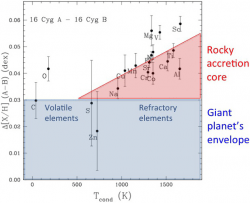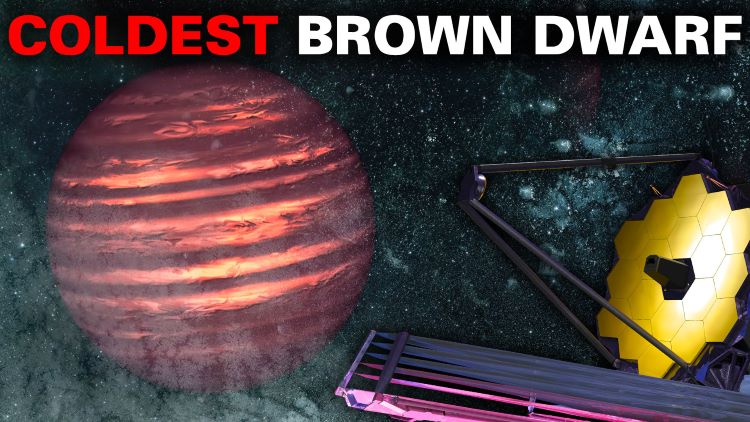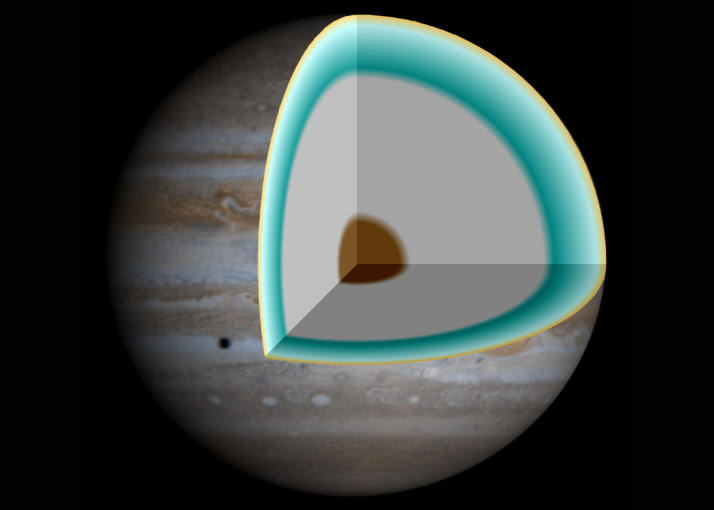What are the atmospheric compositions of cold brown dwarf stars? This is what a recent study published in The Astronomical Journal hopes to address as an international team of researchers used NASA’s James Webb Space Telescope (JWST) to investigate the coldest known brown dwarf star, WISE J085510.83?071442.5 (WISE 0855). This study holds the potential to help astronomers better understand the compositions of brown dwarf stars, which are also known as “failed stars” since while they form like other stars, they fail to reach the necessary mass to produce nuclear fusion. So, what was the motivation behind using JWST to examine the coldest known brown dwarf star?
Continue reading “Brrr. JWST Looks at the Coldest Brown Dwarf”Distant Stellar Atmospheres Shed Light on How Jupiter-like Planets Form
It’s likely that Jupiter-like planets’ origins root back to either the rapid collapse of a dense cloud or small rocky cores that glom together until the body is massive enough to accrete a gaseous envelope.
Although these two competing theories are both viable, astronomers have, for the first time, seen the latter “core accretion” theory in action. By studying the exoplanet’s host star they’ve shed light on the composition of the planet’s rocky core.
“Our results show that the formation of giant planets, as well as terrestrial planets like our own Earth, leaves subtle signatures in stellar atmospheres”, said lead author and PhD student Marcelo Tucci Maia from University of São Paulo, Brazil, in a press release.
Maia and colleagues pointed the 3.5-meter Canada-France-Hawaii Telescope toward the constellation Cygnus, in order to take a closer look at two Sun-like stars in the distant 16 Cyg triple-star system. Both stars, having formed together from the same gaseous disk over 10 billion years ago and having reached the same mass, are nearly solar twins.
But only one star, 16 Cygni B, hosts a giant planet. By decomposing the light from the two stars into their wavelengths and looking at the difference between the two stars, the team was able to detect signatures left from the planet formation process on 16 Cygni B.
It’s the perfect laboratory to study the formation of giant planets.

Maia and colleagues found that the star 16 Cygni A is enhanced in all chemical elements relative to 16 Cygni B. Hence, the metals removed from 16 Cygni B were most likely removed from the protoplanetary disk in order to form the planet.
On top of the overall deficiency in all elements, 16 Cygni B has an added deficiency in the refractory elements — those with high condensation temperatures that form dust grains more easily — such as iron, aluminum, nickel, magnesium, scandium, and silicon. This helps verify what astronomers have expected all along: rocky cores are rich in refractory elements.
The team was able to decipher that these missing elements likely created a rocky core with a mass of about 1.5 to 6 Earth masses, which is similar to the estimate of Jupiter’s core.
“16 Cyg is a remarkable system, but certainly not unique,” said coauthor Ivan Ramírez from the University of Texas. “It is special because it is nearby; however, there are many other binary stars with twin components on which this experiment could be performed. This could help us find planet-host stars in binaries in a much more straightforward manner compared to all other planet-finding techniques we have available today.”
The results were accepted for publication in The Astrophysical Journal Letters and are available online.


